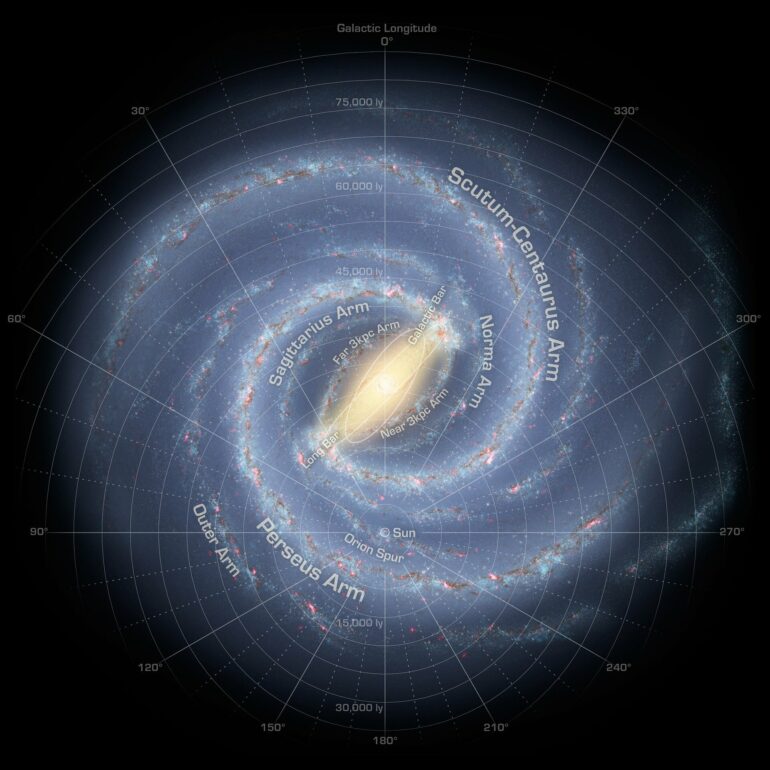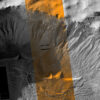In the chaotic environment of open star clusters, strong gravitational interactions between bodies can launch individual stars far outside the cluster, even outside our galaxy, the Milky Way. Now, for the first time researchers have mapped several of those stars, which exist outside the galaxy’s disk, to the clusters of their origin using new data from the European Space Agency’s Gaia Mission.
Researchers from Lehigh University presented the findings, “Stellar Paternity Tests: Matching High-Latitude B Stars to the Open Clusters of Their Birth,” today in a press conference at the 243rd meeting of the American Astronomical Society (AAS) in New Orleans.
“Through tracing them back in time to see where they originated, we are able to match 15 of them to the star clusters where they were born,” said M. Virginia (Ginny) McSwain, associate professor of physics, at Lehigh University. “If we can say with high confidence where some of these stars came from, we will know more about the history of the star clusters in the Milky Way.”
Most of the stars outside of the thin disk of the Milky Way, which includes the spiral arms with a thicker diameter at the center, are more than eight billion years old, forming early in the galaxy’s history. Given their very old ages, it’s not surprising they have traveled far from their birthplaces.
Since nearly all of our galaxy’s star formation occurs in the thin disk, hot B-type stars are rarely found outside this region. Yet a small number of these young stars—estimated at 10 to 100 million years old—are found at high altitudes above and below the disk, likely ejected from the clusters of their birth in the past few million years.
“Hot stars don’t often venture out of the disk, so when they do, they are noticeably out of place,” said Brandon Schweers, a Lehigh University undergraduate student who provided key research on the project. “The ‘parent’ clusters probably ejected most of these B-type stars when close, three- or four- body gravitational interactions flung out a member of the cluster, sending them running away from the plane of the Milky Way.”
One star studied was flung out with a particularly high speed, so it may have been ejected during a supernova in a close binary star system, said Schweers, a senior studying astrophysics. Stars can even be flung out only to swing back and be slingshotted out again.
While these “orphaned” stars have been known for two decades, none had been mapped to their place of origin before, as quality data wasn’t available to trace them to their beginnings. However, with the data from the Gaia Mission, the researchers were able to decipher the stars’ motions in greater precision than was previously available.
Using trajectories to trace back time
The Gaia Mission, launched in 2013, aims to survey more than one billion stars in the Milky Way and build a precise three-dimensional map of the galaxy. The data include unprecedented positional measurements for stars and radial velocity measurements for the brightest 150 million objects.
Based on Gaia data released in 2022, Lehigh researchers traced the kinematic trajectories of 95 high-latitude B stars and about 1,400 known galactic open clusters to identify moments in the past when they may have intersected and an ejection could have occurred.
“Using their 3D positions and 3D velocities through space, we were able to calculate the trajectories of each cluster and high-latitude star over the past 30 million years,” McSwain said. They used the open-source Python galpy package for galactic dynamics analysis to model the gravitational field of the galaxy at each point.
Once they identified potential matches, they compared each ejected star’s color and brightness to the Hertzsprung-Russell (H-R) diagram, a color magnitude diagram, for each open cluster. An open cluster generally has thousands of stars of the same age and composition, at the same distance.
“The shape of the H-R diagram is mostly dependent on the cluster’s age, so we can tell if the ejected star has a similar age to its potential cluster siblings,” McSwain said. Applying the H-R test narrowed down the list of potential matches further.
Finally, they analyzed the core densities of each cluster that was a possible match. Clusters with higher density have more of the strong gravitational interactions between members that give them the most potential for ejecting stars.
Paternity tests prove positive
Combining these tools, the researchers confirmed positive paternity matches for 15 orphaned stars. That galactic genealogical tracing was what gave Schweers the idea for the presentation’s title.
“When I reached the stage of comparing the color and brightness for the potential matches and discarding those that showed a poor correlation in the H-R diagrams, I felt as though I was comparing the ‘DNA’ of the orphaned stars and their potential siblings,” Schweers said, reminding him of “The Maury Povich Show.”
“I think everyone has heard the saying, ‘You are not the father’ that came from that show. For many of these clusters, I was essentially telling them they are not the parent of these orphaned stars, so I came up with the name ‘Stellar Paternity Tests,'” he said.
Based on their trajectory calculations, the researchers estimate the ejections took place about 5 to 30 million years ago, “flinging abandoned stars across the Milky Way at speeds of 30-220 kilometers/second (67,000-490,000 miles/hour) to their present locations,” they wrote. “Our results provide a measure of the ejection age for each orphaned star, providing new insight into the relative importance of dynamical vs. supernovae ejection in young open clusters.”
While they were able to match a number of the far-flung stars, some couldn’t be traced back to the Milky Way’s disk very plausibly, which may provide evidence for other unusual scenarios, they added. These might include rare star formation in molecular clouds high outside the disk, or they could be relics of past dwarf galaxies that merged with the Milky Way in the past.
Undergraduate astrophysics student Christopher J. Aviles Bramer, who graduated in 2022, contributed to the research project.
Citation:
‘Stellar paternity tests’ match orphaned stars to their Milky Way origins (2024, January 10)



